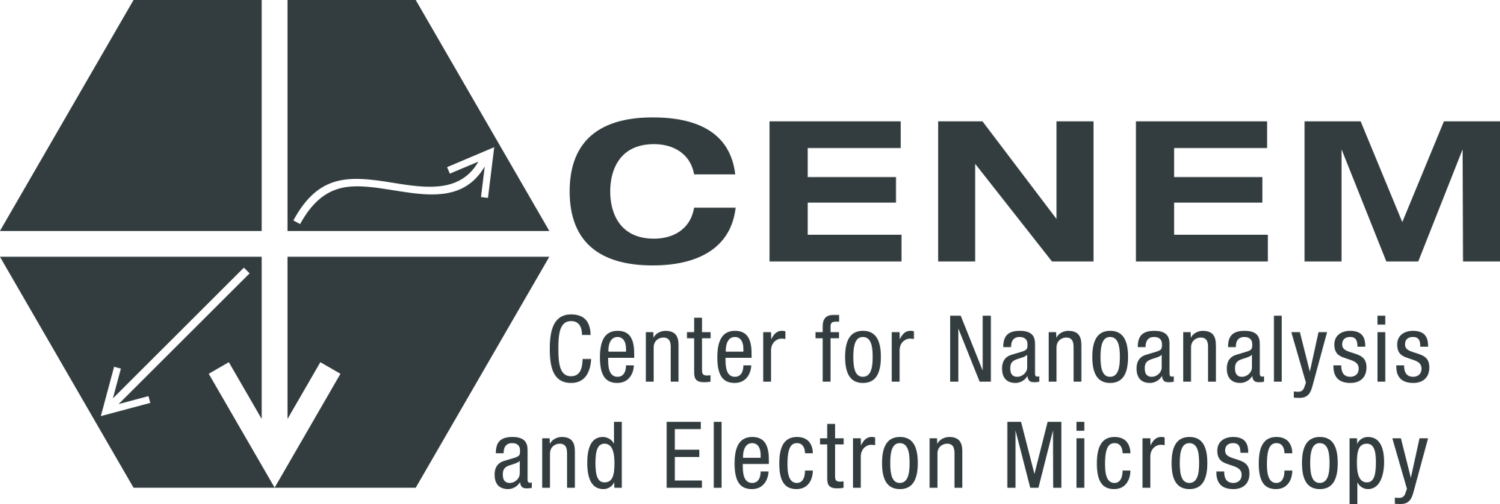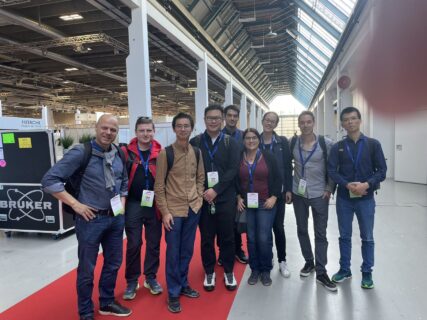CENEM Researchers Shine at European Microscopy Congress (EMC 2024)
A team of delegations from the Institute of Micro and Nanostructure Research (IMN)/CENEM made its mark at the European Microscopy Congress (EMC 2024), one of the world’s largest and most prestigious microscopy exhibitions from 25-30. August 2024. Held every four years, EMC combines advancements in microscopy techniques across the physical and life sciences, bringing together experts, manufacturers, and suppliers to share new technologies and applications. This year’s event attracted over 90 exhibitors and more than 2,500 professional attendees.
Ten IMN members participated in the conference, contributing with talks, posters, and leadership roles. Prof. Spiecker notably chaired the symposium titled “Dynamic Studies Using Micro-Nano Lab,” guiding discussions on cutting-edge in situ microscopy techniques, applications and insights obtained for materials science.
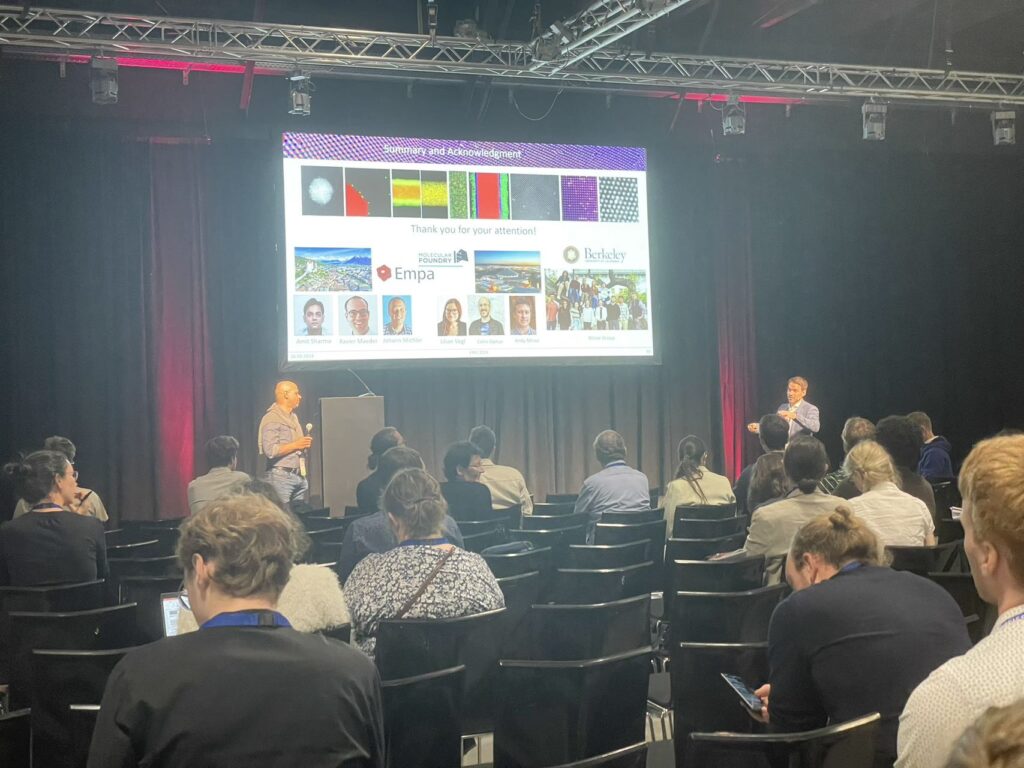
Prof. Pelz delivered an invited talk on “Progress in 3D Phase-Contrast Imaging Using 4D-STEM: Increased Dose Efficiency and Depth of Field,” presenting advancements in atomic scale 3D imaging towards more realistic samples.
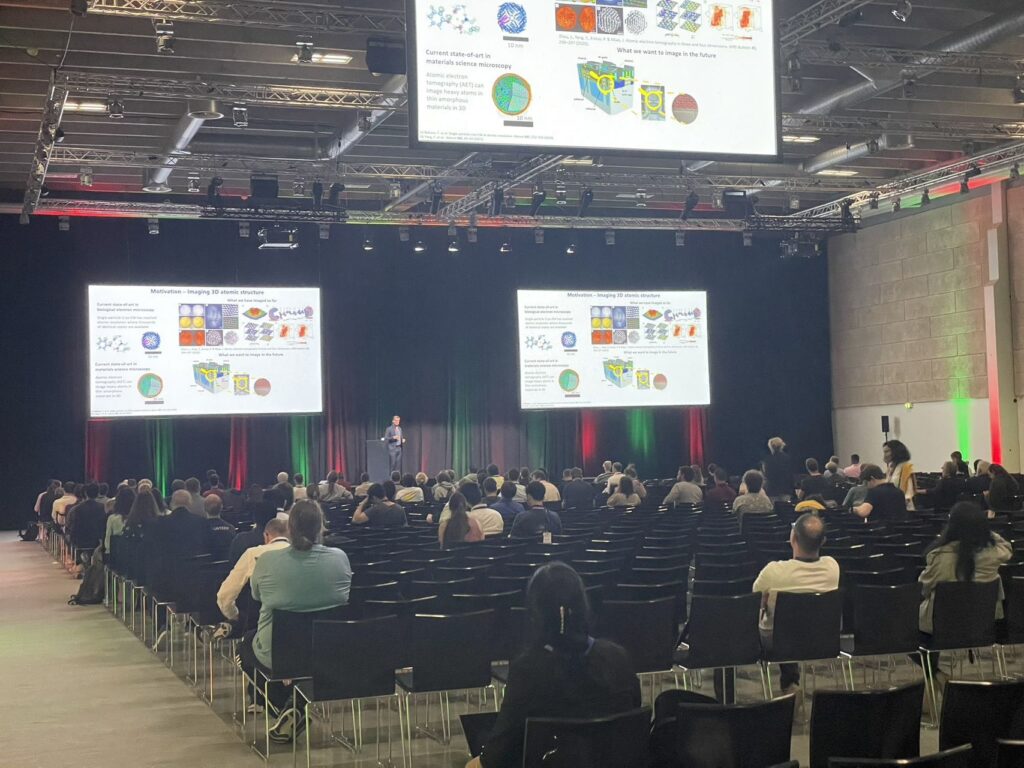
Further significant contributions from IMN include:
- Nicolas Karpstein gave a talk on “Uncovering Microscopic Details of Shearing Mechanisms in the L1₂ Structure by Unambiguous Stacking Fault Analysis,” delving into the microscopic mechanics of material deformation.
- Alexander Kichigin presented a poster on “Simulating Electron Energy-Loss Spectroscopy and Cathodoluminescence for Nanoparticles Located on Substrates,” focusing on simulation techniques for nanoparticle analysis.
- Irene Kraus showcased her research with a poster titled “Texture Analysis of Radiation Sensitive Organic Films: Comparative Study by Electron Diffraction Tomography and GIWAXS,” comparing different methods for analyzing organic film textures.
- Thomas Przybilla contributed with a poster titled “Improving Electron Tomography of Mesoporous Silica Structures by Ga Intrusion,” discussing advancements in electron tomography.
- Carmen Rubach presented her poster on “Sample Holder Design for TEM In-Situ Straining Experiments on 2D Materials,” highlighting innovative designs for in-situ experiments.
- Mingjian Wu shared insights in a talk on “Towards In-Situ 4D-STEM Observation of Texture Evolution in Nano-Crystalline Thin Films,” focusing on real-time texture analysis in thin films.
- Shengbo You gave a talk titled “End-to-End Learning of Atomic Resolution Phase-Contrast Volumes from 4D-STEM Measurements,” presenting machine learning approaches to atomic resolution imaging.
- Xin Zhou delivered a talk on “A Twist to Superlubric Sliding in Bilayer Graphene Uncovered by In Situ TEM,” revealing new discoveries in graphene’s superlubricity properties.
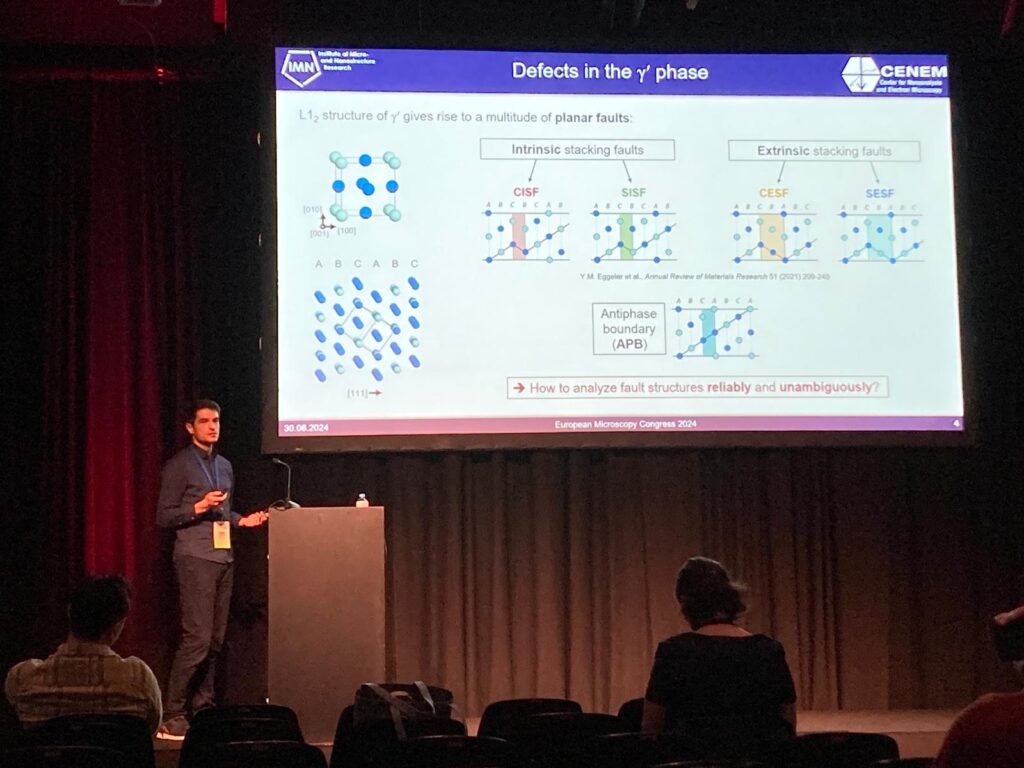
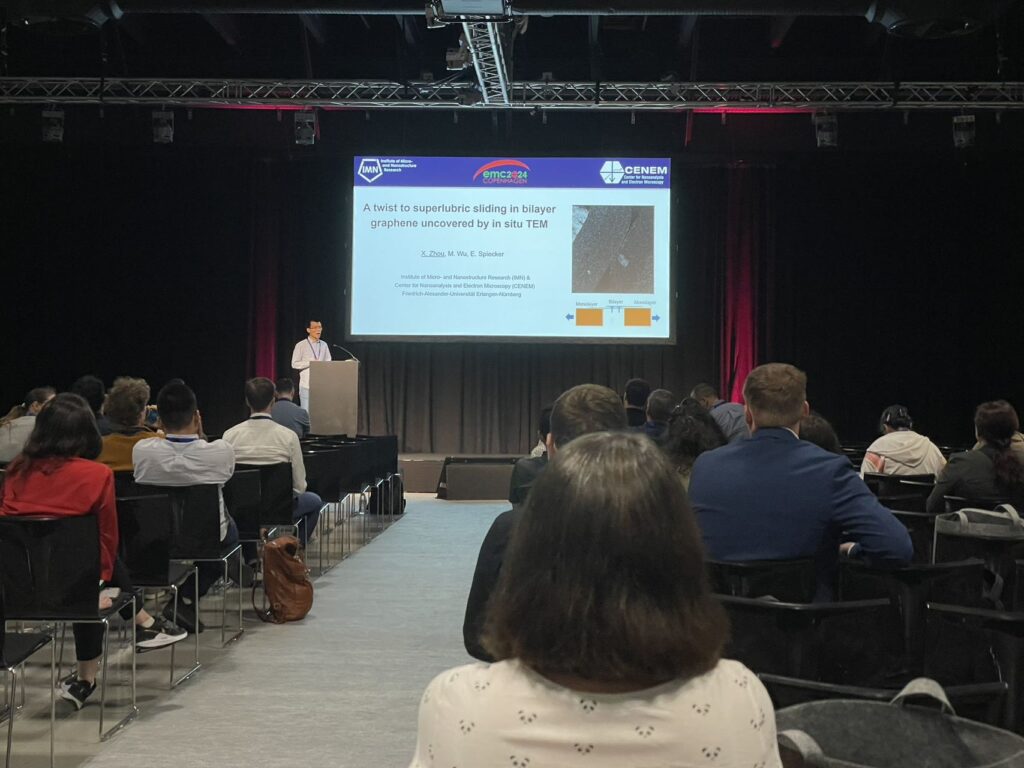
This EMC marked the first in-person gathering of the European microscopy community after an eight-year hiatus due to the COVID-19 pandemic, making it an especially significant event. The conference provided an excellent opportunity for IMN researchers to reconnect with industry peers and collaborators, while also learning about the latest industry developments and breakthroughs. IMN members engaged in numerous discussions with fellow researchers and industry leaders, fostering valuable connections and collaborations. The event was a remarkable opportunity to exchange ideas and stay at the forefront of the rapidly advancing field of microscopy.
